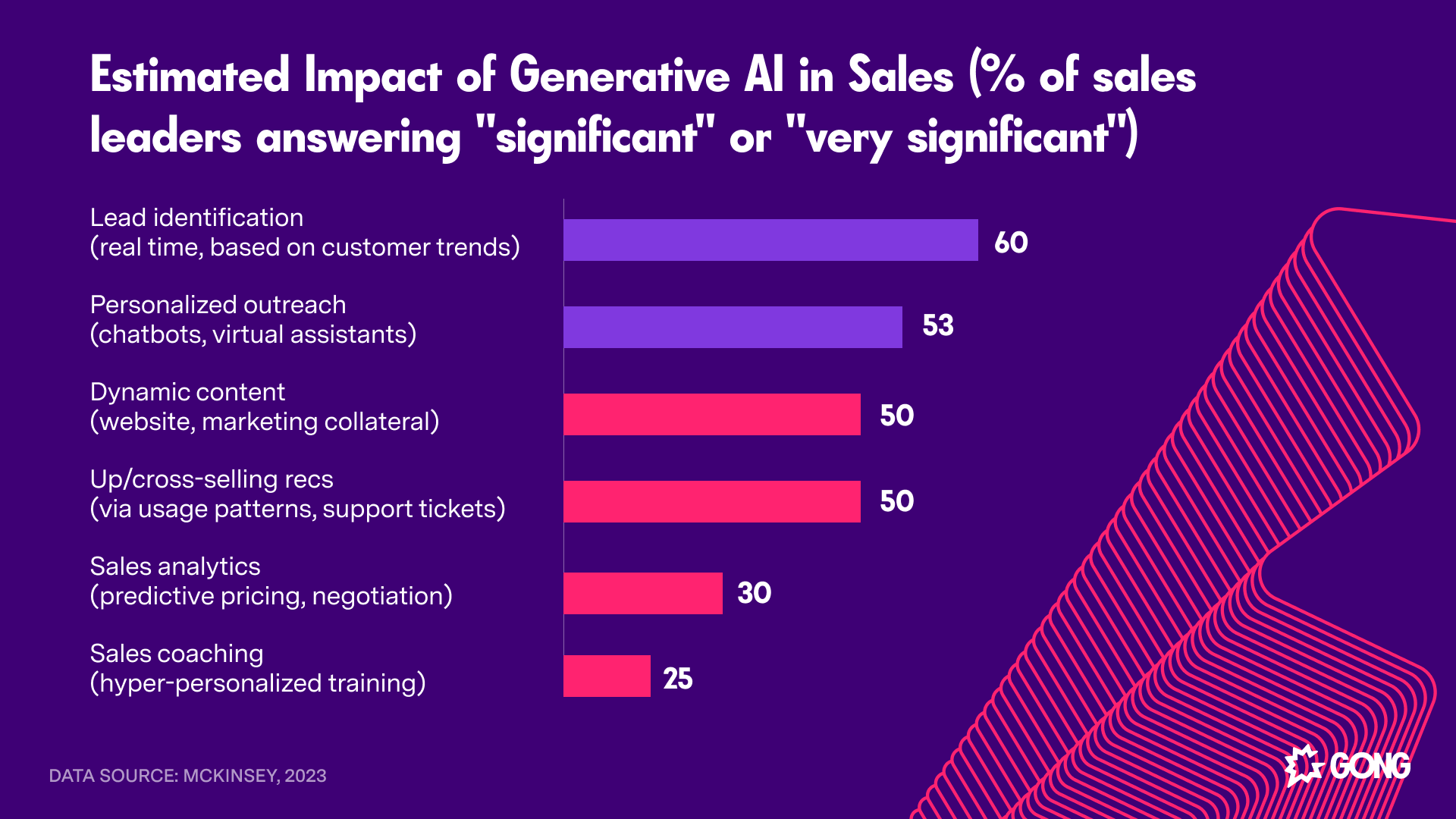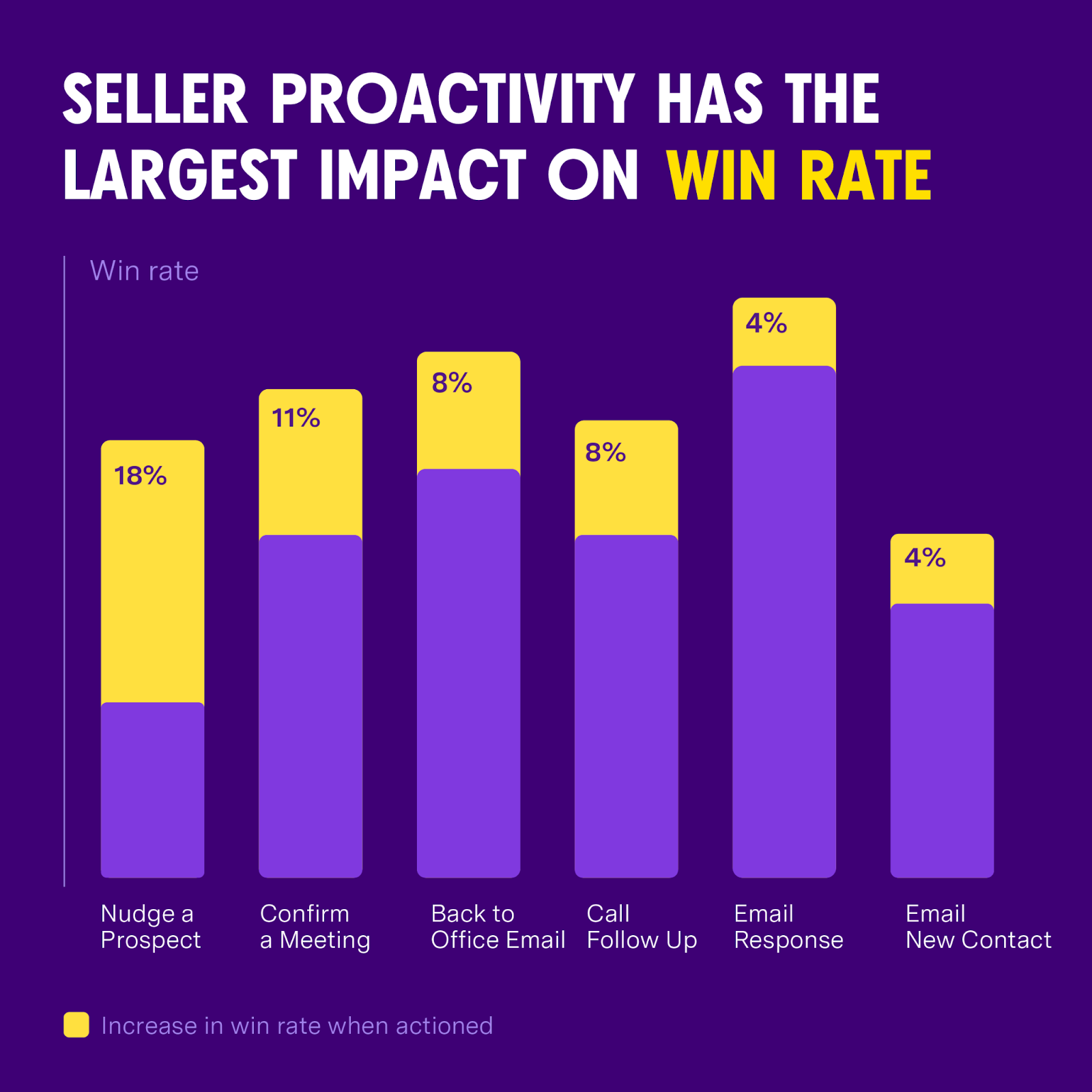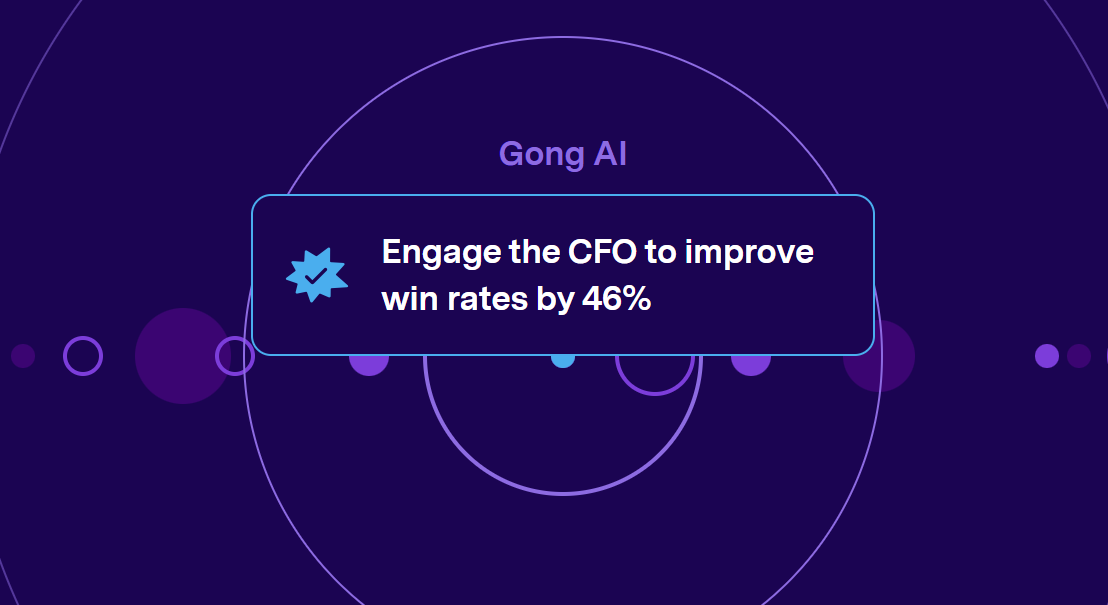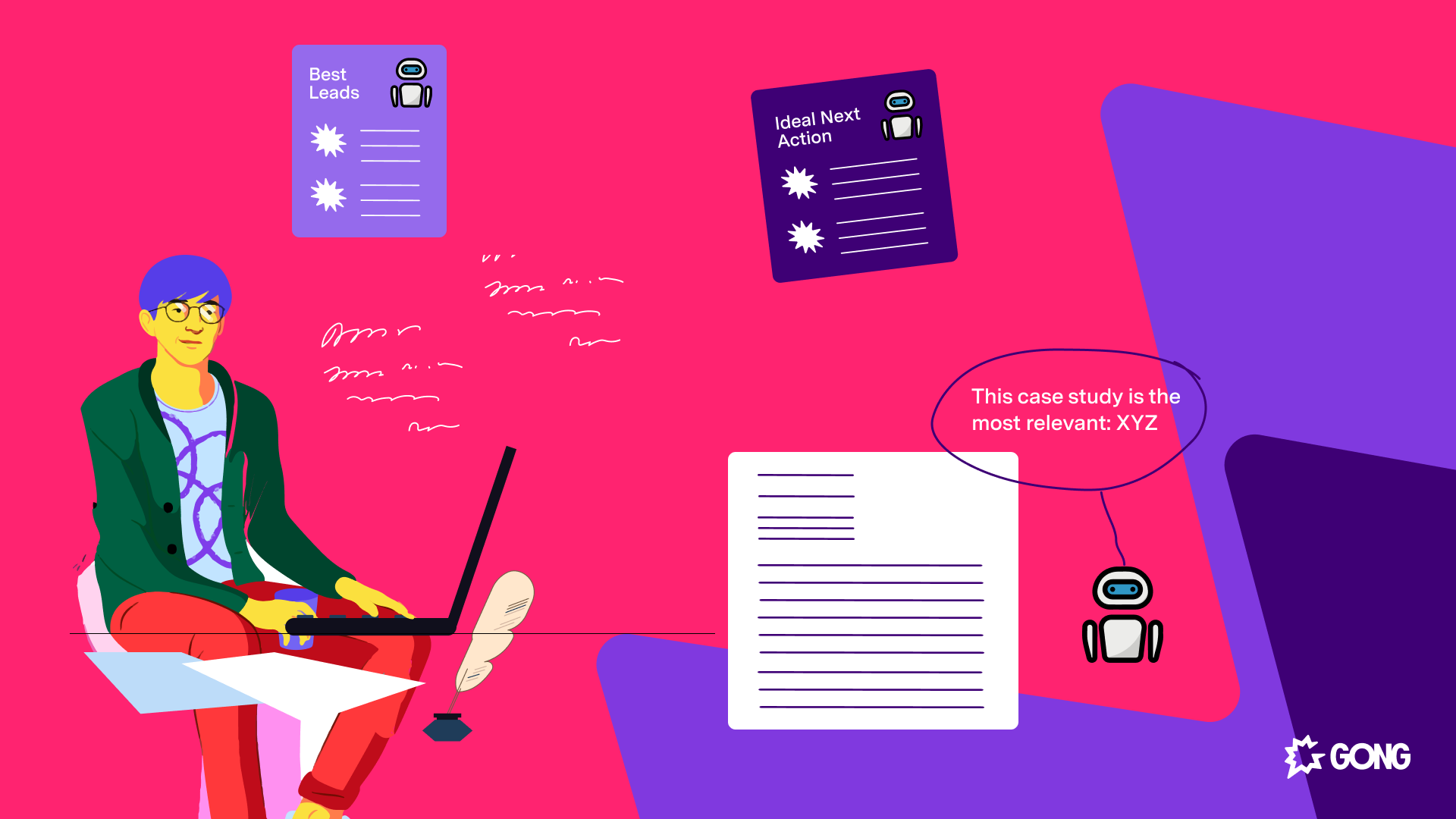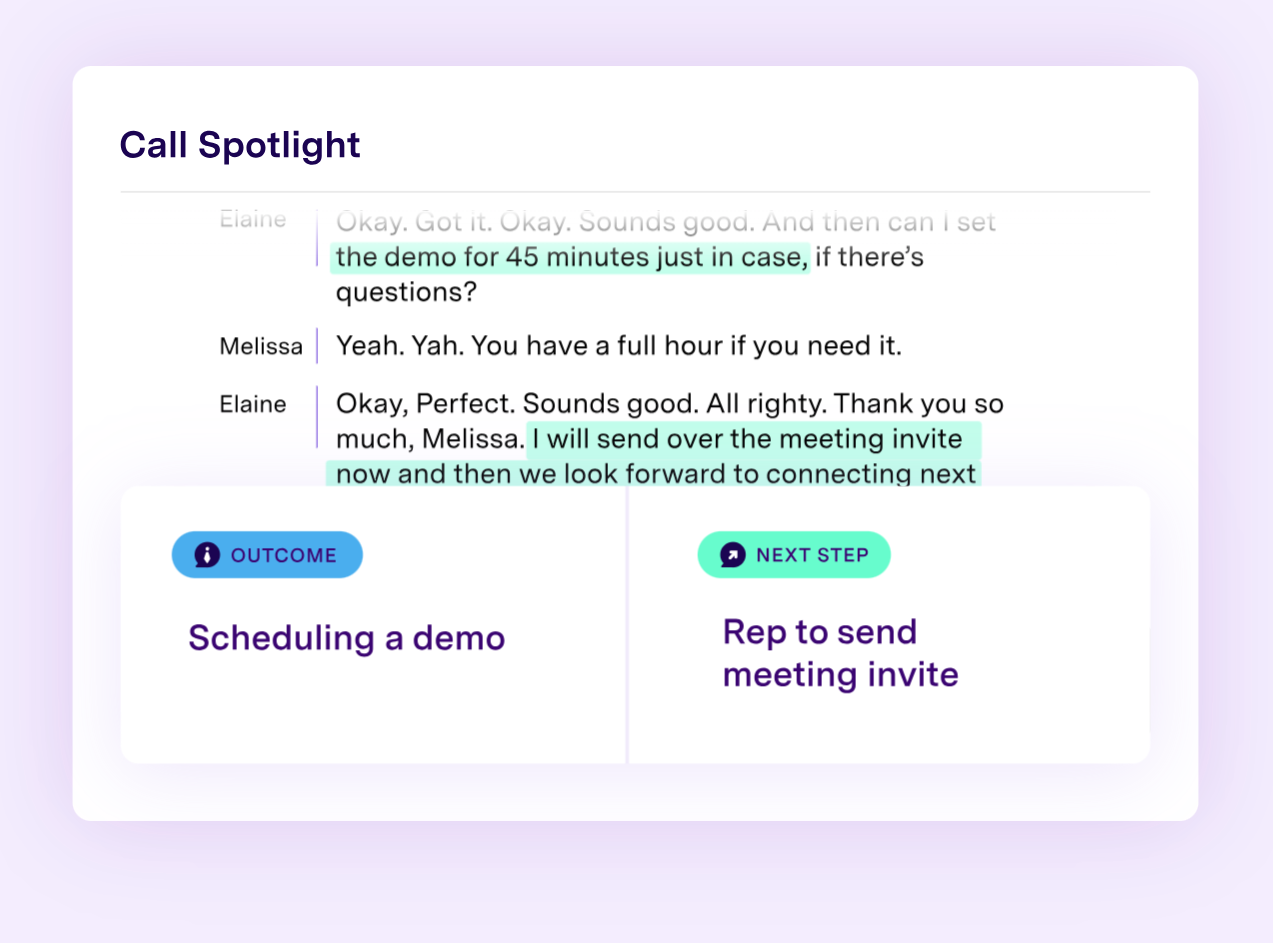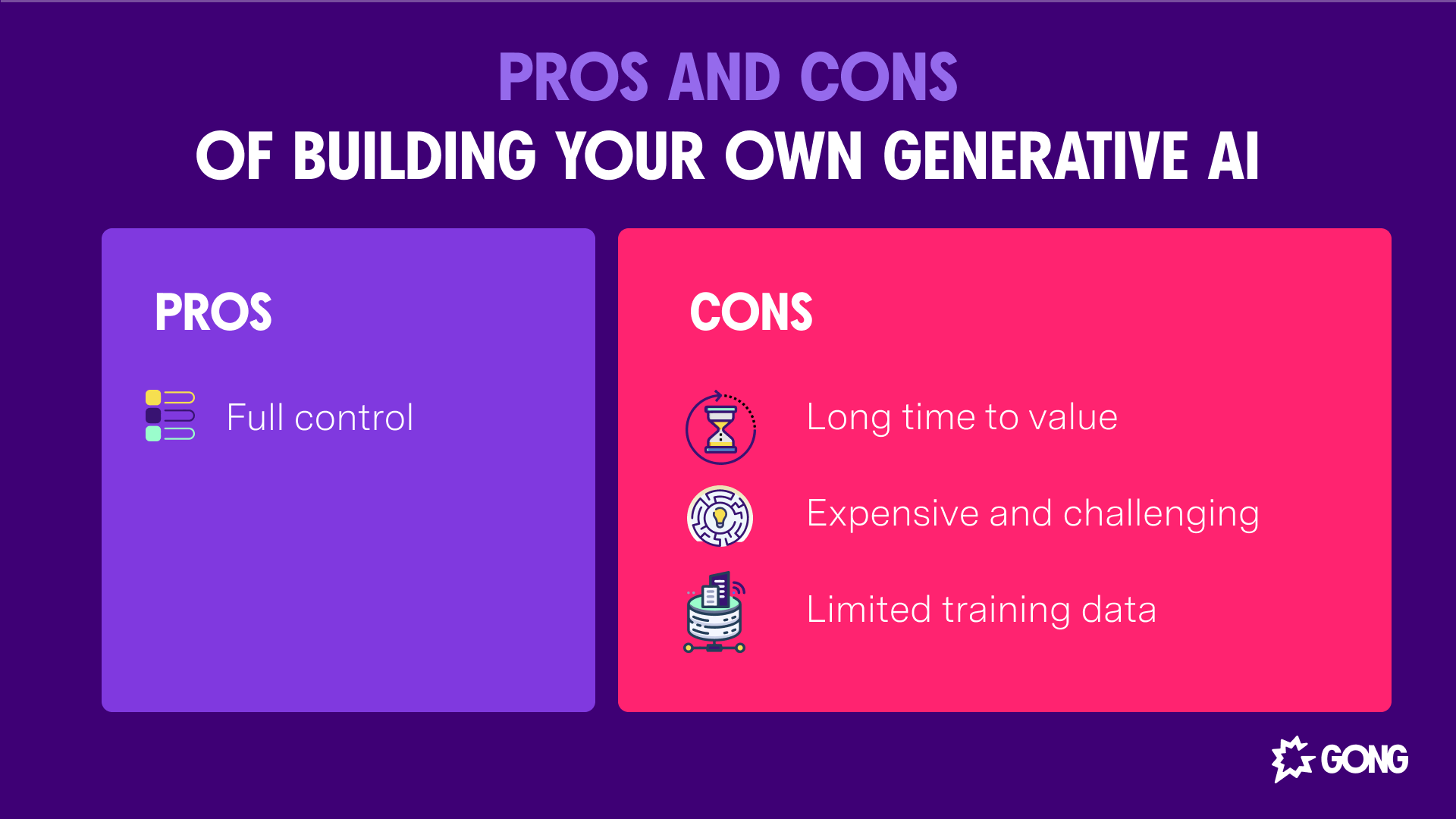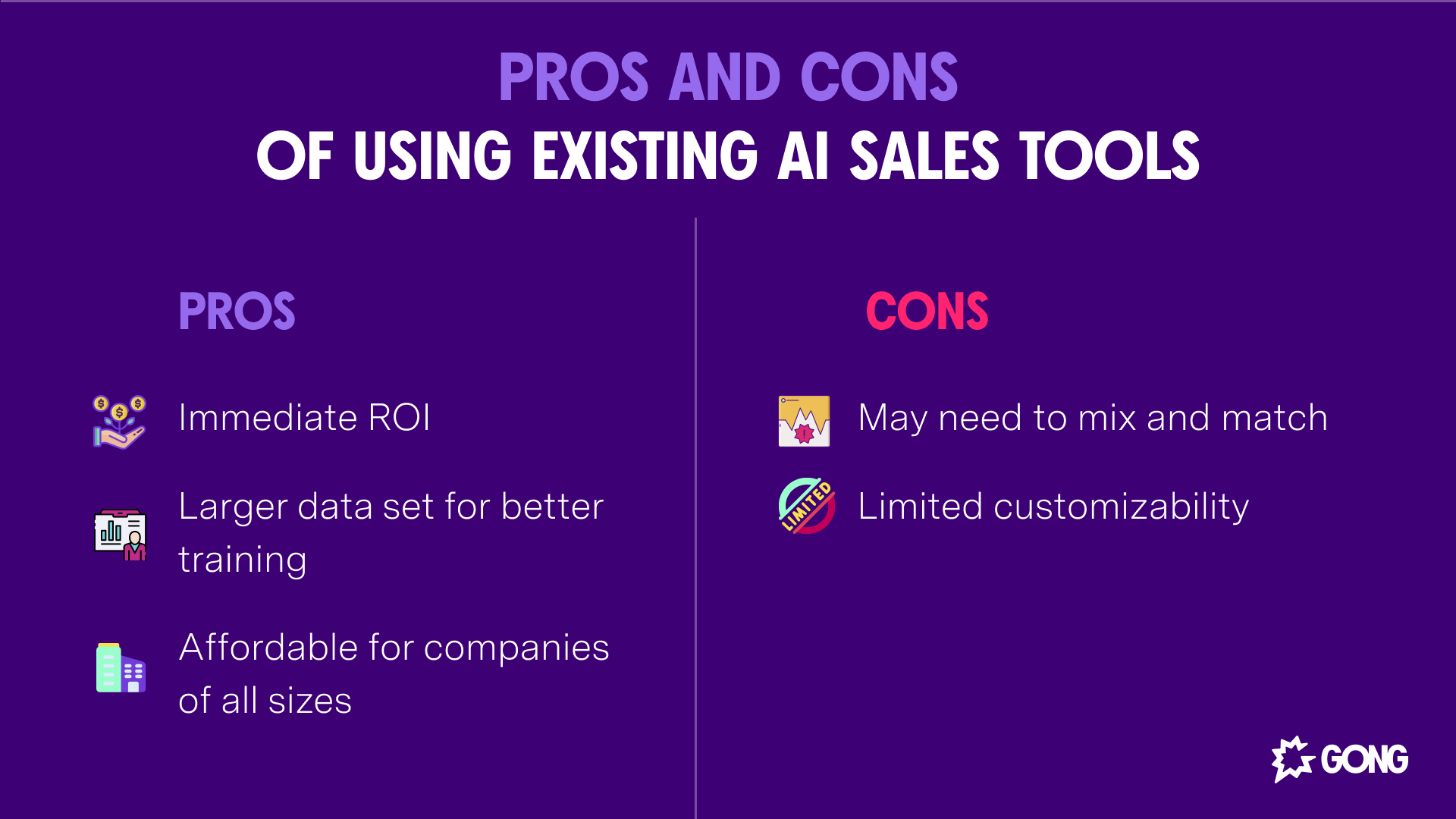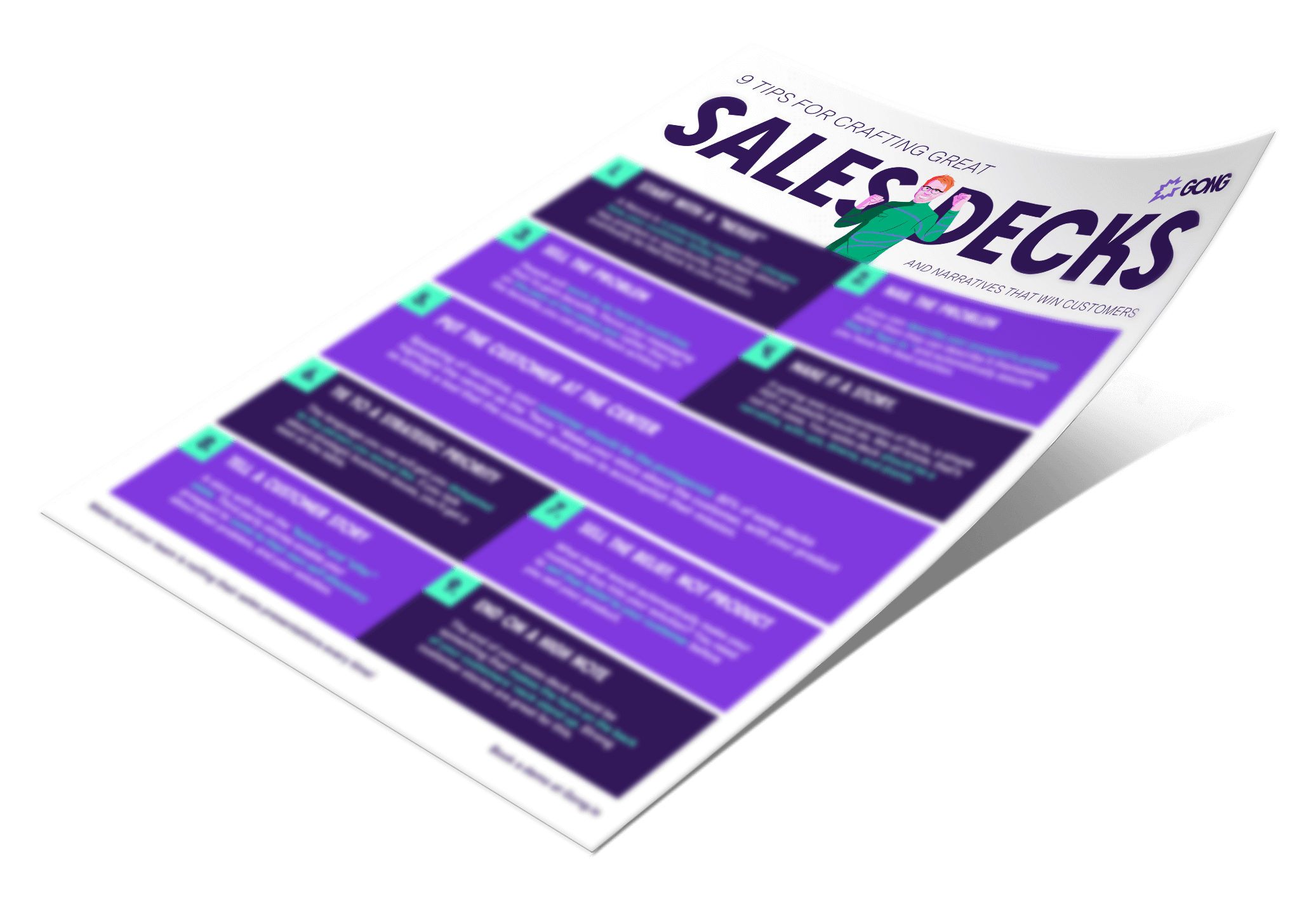Generative AI for Sales: 8 Ways Sales Teams Use It in 2023
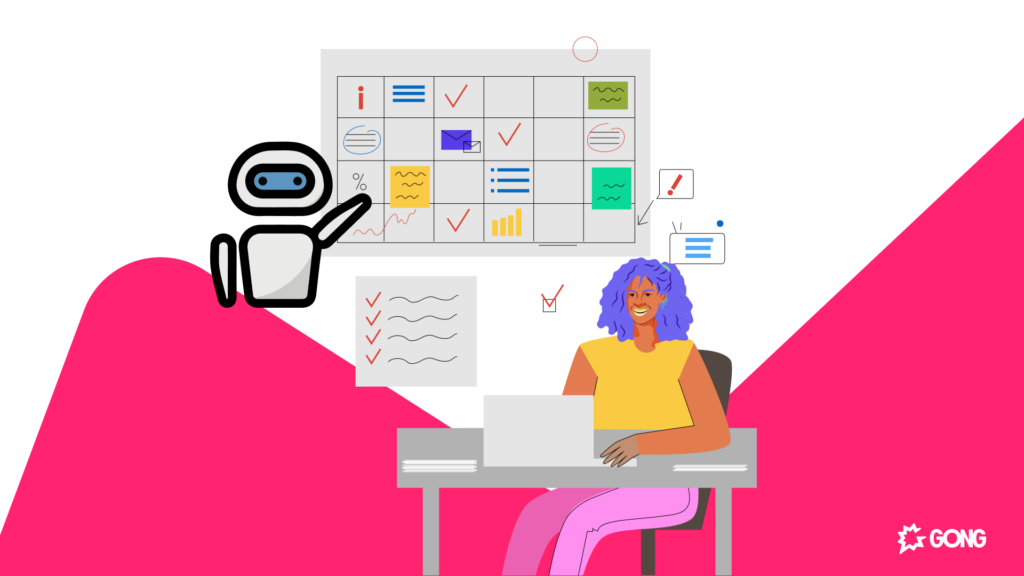
In 2023, sales teams are harnessing the power of generative AI to revolutionize their strategies and gain a competitive edge like never before.
This groundbreaking technology is not just a buzzword; it’s a practical tool that is reshaping the way sellers engage with buyers and drive revenue. It’s easy to see how generative AI has already helped sales teams, with examples like:
- Drafting compelling pitches or cold emails based on closed-win data
- Improving accuracy of sales forecasts
- Providing real-time personalized guidance for reps while on a sales calls
In this blog post, we’ll explore the eight transformative ways sales teams are using generative AI to maximize their efforts, elevate their results, and stay ahead of competition.
The 8 most impactful use cases for generative AI for sales
Generative AI models can be trained on your own internal data and output results like advice or even finished call scripts in perfect English (or other languages). That means there’s an incredible range of applications in the sales world.
In a 2023 survey by McKinsey, sales leaders shared the AI use cases they were most excited about for sales, including lead identification, personalization, and better analytics.
A minority (25%) also highlights the potential for personalized sales coaching. Basically, AI sales training that’s optimized for each rep without needing a mentor or coach to do it manually.
We generally agree with McKinsey and the view the interviewed executives take, although we see a bit more potential on the sales engagement side (as that’s where we’ve already driven great results with AI).
1. Find more leads faster with AI-guided prospecting
Let’s start by touching on the CMOs’ favorite use case — identifying leads with AI-guided prospecting.
Generative AI doesn’t just help you to analyze existing leads. It prescribes new prospects based on a range of factors — geography, market trends, connected employees, recent news, and more.
It can analyze your ICP (Ideal Customer Profile) and determine which companies match it. This saves your sales development reps a lot of time on manual lead identification. Plus, it lets them focus on selling to interested prospects since AI still can’t close effectively (yet).
2. Personalize sales outreach like emails with AI
Use AI to leverage sales intelligence data to help personalize outreach emails: highlight relevant case studies, recent events, connections to existing clients, relevant regulations, etc.
Our prospecting partner, Apollo.io, has already leveraged OpenAI’s ChatGPT to create an AI sales assistant that can do this at scale. It will analyze contact signals like relevant news articles and create a personalized opener (like congratulating on a recent funding series).
It will even analyze responses to identify the type of objection and the ideal response automatically, creating a much more engaging follow-up sequence. This ability to hold conversations is the next evolution in AI sales automation.
3. Boost seller proactivity and win rates through AI suggesting the right steps
Seller proactivity has a significant impact on win rates. How big? We’ve done the research here — seemingly small actions like nudging a prospect can boost win rates by 18%.
Okay, you might ask, but how does generative AI come into play here? It plays the role of a real-time sales coach. Generative AI can help reps know when to take what actions, leading to taking the right kind of proactive actions and higher win rates.
With real-time guidance on specific leads (like AI suggesting the next action with a lead based on the most recent call), it’s much easier for sales reps to close deals.
Plus, lead prioritization powered by artificial intelligence means sales reps can focus their sales actions where they have the highest ROI. So AI-powered insights can help drive a higher win rate and also a higher average deal value.
4. Use AI-powered prescriptive analytics to optimize your strategy and process
But AI can’t just help your individual sales reps make better decisions in the moment. It can also help guide crucial strategic decisions for your organization.
You no longer have to get high-paid analysts to comb through data, create custom reports, and search for crucial needle-in-the-haystack insights. Instead, AI-powered prescriptive analytics can find these vital insights for you.
For example, it might identify that when CFOs are included in the sales process, your win rates are 46% higher. It will then suggest this adjustment to your sales leaders.
Your VP of sales or sales manager can then implement this change to your sales strategy and train your sales reps to apply it in their sales process.
Prescriptive analytics are key to helping your team optimize their overall selling strategy and who to target within the organization. It’s the next natural step in AI sales forecasting — not just calculating how much deals are worth but prescribing what you should do to land them.
5. Scale your sales content with AI-generated content
ChatGPT is already being used to generate a lot of content. Students use it to write essays, bloggers use it for blog posts, and YouTubers get their video scripts from it.
Many companies already use it for their content marketing efforts, mostly for less complex top-of-funnel content.
If you use it correctly, it could also help you scale your sales content. For example, you could:
- Use AI-powered chat to generate new content ideas.
- With the right prompt, generative AI can write an initial draft that editors can polish. (For example, you could feed it the data points from a case study and instructions, and it could generate the first draft.)
- Use AI to repurpose existing content in different formats.
Make sure that you proofread and fact-check any AI-generated content, as it has a widely reported tendency to lie. This happens because it can make false associations based on its data set or simply rephrase misinformation already on the web.
So don’t fire your writing/editing staff just yet. AI still needs a lot of human oversight in this department.
6. Use generative AI for sales to deliver personalized sales enablement
Sales enablement powered by generative AI can act like your sales reps’ navigation system. An AI assistant can recommend what types of prospects to call, when to call them, and what to write or say. It can even suggest what next actions to take after a call.
AI sales enablement can feel like having a personal sales coach:
- Each rep gets advice that is relevant to their types of prospects.
- Call and email scripts are personalized to the types of leads they’re dealing with.
- It can remind them to focus on priority leads and spell out which case study or other sales content to forward them.
If you want to scale the impact of your sales enablement team and efforts, generative AI is the perfect ally.
7. Forget note-taking – let AI identify key insights from sales calls
Any seasoned sales rep knows the importance of taking notes (physical, not mental) from a discovery call to help guide the sales process with a qualified lead.
AI can help you not just transcribe these calls but identify critical points in the conversation and how they imply the best next step. The most basic example of this is a call spotlight that reminds a rep to fulfill a promise, like sending a meeting invite or case study.
It could also identify key details that indicate whether or not the prospect has a good potential of becoming a buyer or not.
8. Free up sales reps’ time by speeding up repetitive processes
This last benefit is more of a cumulative effect of many of the different use cases mentioned above.
- Making adjustments to a pitch deck or other sales materials can be done in a matter of minutes with generative AI.
- Sales managers can spend less time on forecasting (Example: Handshake spends 66% less time on forecasting after taking advantage of Gong’s AI-powered forecasting tools.
By either eliminating or speeding up repetitive tasks like making sales reports or editing call scripts, you free up time for your reps to focus on more valuable lessons. This will help improve your sales efficiency across the board.
How to start using generative AI for sales: Two different approaches
Now that you have an overview of the generative AI’s use cases in sales, let’s talk about how you can get your team involved.
Option #1: Build your own generative AI in-house, leveraging open-source models
The first option is to build generative AI using open-source models and your internal data. This might sound tempting for a CIO with a big budget, but the path to positive ROI is long and complex.
Pros
- Full control: You can build a generative AI with the exact features your sales professionals need and want.
Cons
- Long time-to-value: It can take months or years before you even have a basic working prototype that’s helpful.
- Expensive and challenging (only viable for large enterprises): Data scientists and AI/machine learning specialists don’t come cheap. You’re more or less priced out unless you’re a large enterprise or a very profitable SaaS.
- Limited training data: The output of a generative AI is only as good as its input — with only data from your buyer data platform, it might struggle to learn how to identify meaningful patterns.
Option #2: Leverage existing generative AI sales tools
The second and more realistic option for most companies and sales teams is to leverage generative AI tools for existing sales.
Pros
- Immediate ROI: Since the tools already work, you can start optimizing your sales processes from day one. That means better win rates, lead prioritization, and personalization at scale without the wait.
- Larger data sets for better training: With multiple clients with similar goals and data sets, third-party AI providers can access more high-quality, relevant data to improve their models.
- Affordable for companies of all sizes: Most of the tools today are more affordable than CRMs, and the best options have an excellent track record of positive ROI.
Cons
- You may need to mix and match to get all the desired features.
- Limited customizability: With third-party tools, you can never have the same level of control or customizability. If you get in at an early stage, you can influence the SaaS to create the features you need.
Start using the power of generative AI in your sales with Gong
Do you want to boost win rates and improve your sales strategy with real-time AI-powered insights?
Gong can do all of that and more.
Call spotlight makes note-taking obsolete and helps your sales professionals choose logical next steps. AI-powered sales call analytics help managers spot weaknesses and help individual reps improve. (Gong helped Mintel improve win rates by 34% with this new access to smart sales performance data.)
If you’re ready to power your campaigns and sales efforts with the power of next-gen AI, sign up for a product demo today. A technical expert who understands your company’s unique needs will walk you through exactly how Gong can help. Take your sales engagement to the next level.
